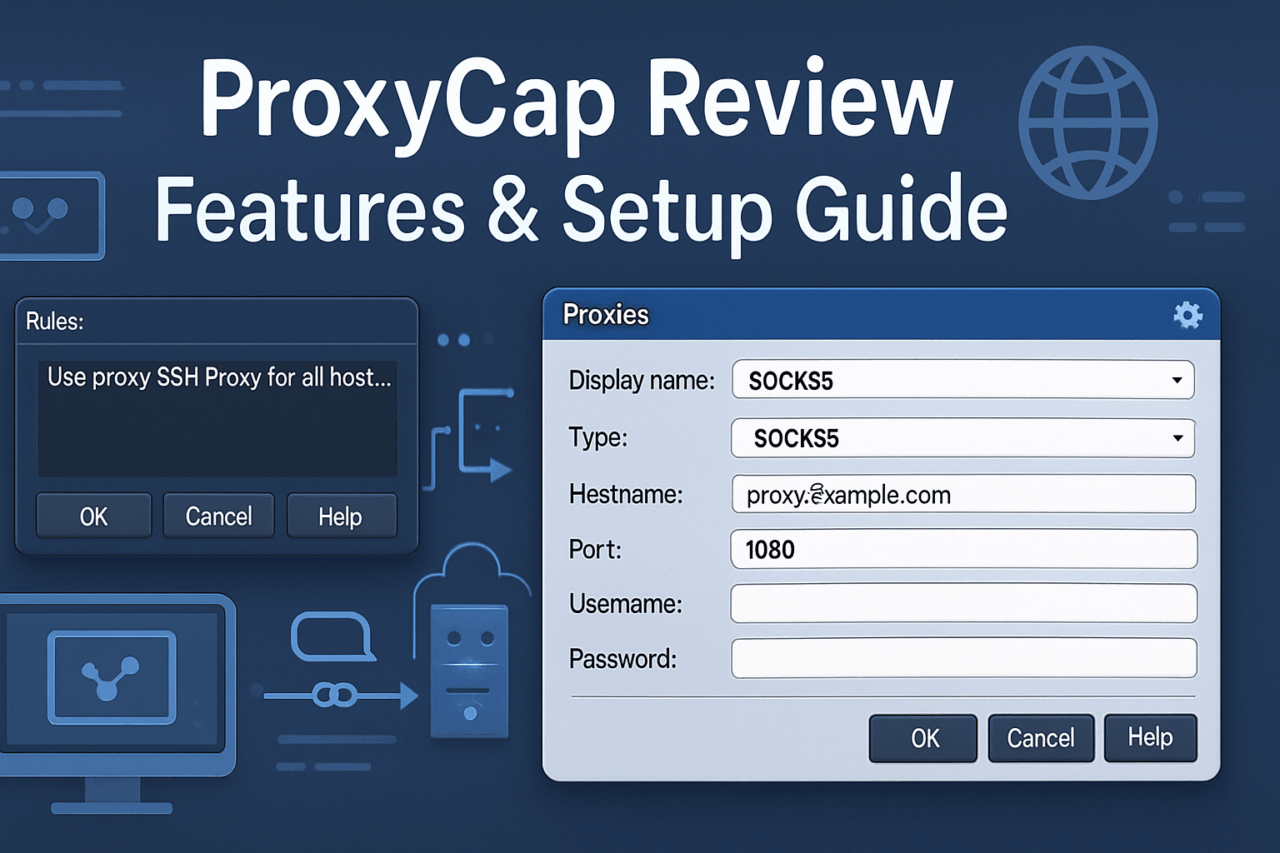ProxyCap Review – Features & Setup Guide
Like a well-designed radio receiver, ProxyCap operates quietly in the background, routing your digital signals with precision and reliability. In a field crowded with blunt instruments, this software distinguishes itself as a tool for those who appreciate both fine-tuned control and robust performance. Let’s tune in to its key frequencies.
Features: Fine Granularity Meets Automation
ProxyCap’s principal virtue lies in its rule-based approach to proxy routing. Users may define explicit criteria—application, destination address, port, and protocol—determining which traffic is relayed through which proxy server. It supports a broad spectrum: HTTP, SOCKS4/5, and SSH tunnels, both for single proxies and complex chains. This reminds me of the way a classic superheterodyne radio employs multiple stages to refine a signal: ProxyCap allows for layered, nuanced traffic management.
Other notable features:
- Per-App Rules: Route only specified applications through the proxy, sparing others.
- IPv6 Support: Prepared for the modern addressing landscape.
- DNS-over-Proxy: Prevents DNS leaks by ensuring name resolution is also proxied.
- Authentication: Handles proxies requiring credentials.
- Portable Mode: Useful for technicians moving between workstations.
- Network Failure Handling: Smart fallback and error notifications.
UI/UX: Functional, Not Flashy
ProxyCap’s interface is reminiscent of an oscilloscope—utilitarian, direct, and designed for those who value substance over style. The main console presents rules as a list, easily edited and reordered. Wizards guide new users through proxy addition and rule creation, reducing the risk of configuration blunders.
There’s little superfluous decoration. Some may call this austere; I call it efficient. Like a chess clock, every element is there for a reason.
Compatibility: Wide Coverage, Few Gaps
ProxyCap is available for Windows (all recent versions) and macOS. It works with both 32-bit and 64-bit applications, and—importantly—supports UWP (Universal Windows Platform) apps, which many competitors neglect. There is, however, no native support for Linux—a notable omission for the more Unix-minded operator.
Configuration: Setting Up with Precision
The initial setup is straightforward:
- Install the Software: Standard installer, with optional portable version.
- Add a Proxy Server: Specify type (SOCKS, HTTPS, SSH), address, port, and authentication if needed.
- Define Rules: Simple wizard lets you select which applications and remote addresses should use which proxy or chain.
- Test & Monitor: Built-in tools help verify that routing is as expected.
For complex scenarios—such as cascading proxies or per-domain rules—ProxyCap provides the necessary levers without overwhelming the user.
Practical Tips: Avoiding Crosstalk
- Test Each Rule: Like checking each stage of a radio circuit, validate your rules one by one to ensure traffic is routed as intended.
- Use Proxy Chains Judiciously: More hops mean more latency. Only chain proxies when privacy or routing demands it.
- Leverage DNS-over-Proxy: This prevents DNS leaks, a common pitfall in proxy setups.
- Portable Mode for Troubleshooting: Carry ProxyCap on a USB drive to debug or configure proxies on multiple systems without installation.
- Monitor Application Updates: Some apps may change their executable paths, requiring rule updates.
Pros and Cons
Pros:
– Granular, per-app and per-destination control.
– Supports advanced proxy types and chaining.
– Reliable DNS leak protection.
– Lightweight and stable; minimal system overhead.
Cons:
– Spartan interface may not appeal to all.
– No native Linux version.
– Occasional quirks with some UWP apps.
– Paid license after trial.
Conclusion: A Specialist’s Instrument
ProxyCap is not a blunt-force hammer for all traffic, but rather a craftsman’s soldering iron—precise, reliable, and built for those who need control. Its methodical approach recalls the discipline of chess: every move (rule) is deliberate, every piece (application) accounted for.
If your work or play requires selective proxy routing—be it for privacy, accessing geo-restricted content, or testing networked applications—ProxyCap is well worth the investment. For the generalist, it may feel like overkill. But for those who value strategic, structured network management, it remains a benchmark tool—a classic, updated for the modern board.

Comments (0)
There are no comments here yet, you can be the first!